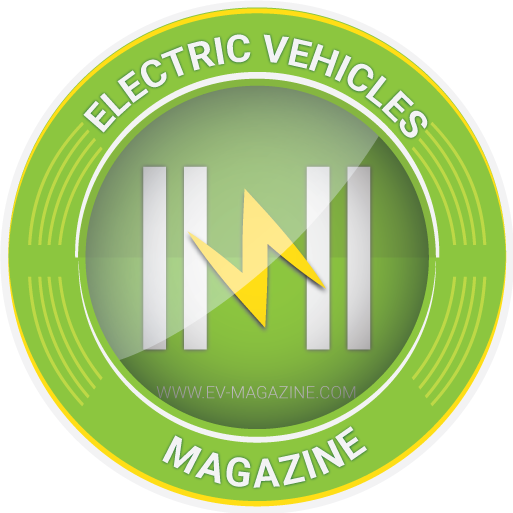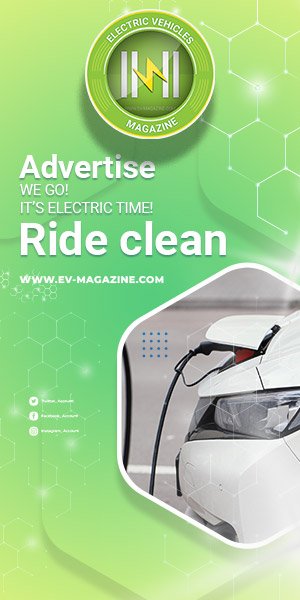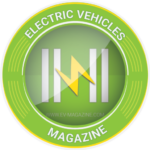BAE Systems is dipping its engineering toes into trucking’s deepening EV pond. The company is better known as a global aerospace engineering firm, but it also has extensive experience with propulsion systems for big transit buses.
More than 18,000 battery-electric buses with BAE-designed power systems have been moving riders around major cities like New York City, Paris, and London, as well as Toronto and Vancouver, for more than 25 years.
(Photo: Jim Park)
“We’re big, we’re committed to electrification, and we’ve got a lot of experience with 5 billion miles of revenue service on Class 8 electrified vehicles,” said Tom Webb, director of business development and strategy, power and propulsion systems at BAE Systems. “That’s buses, mind you, not trucks, but there are similarities there.”
BAE has an innovative approach to powering heavy electric vehicles. If it were art, you’d call it minimalist. The design uses far fewer components than we typically see on a medium-duty BEV chassis. It requires much less heavy, expensive copper high-voltage cable, and its modular nature allows for easy expansion and chassis design flexibility.
Last summer, BAE inked a deal with Eaton to pull its electric drive technology from the transit bus market into the medium- and heavy-duty truck space.
The Memorandum of Understanding between the two provides a non-exclusive, co-marketing arrangement where each can maintain their share of certain markets while collaborating in areas of mutual benefit.
“Eaton will continue selling transmissions to OEMs that may have selected a different motor or are already partnered with different powertrain providers,” explained Justin Hopkins, Eaton’s product director for EV gearing and transmissions. “Likewise, BAE can and will continue to sell direct drive systems where there’s no transmission and they certainly are going to be open to selling their power electronics and motors to customers who may have a different transmission in mind.”
Eaton isn’t presently a big player in the electric truck space. The company provides two-speed medium-duty transmissions for Thomas Built school buses. It also has a soon-to-expire agreement with bankrupt transit bus maker, Proterra, supplying medium-duty four-speed transmission for its transit business.
Interestingly, Eaton is a significant player in the electrical world. That accounts for about two-thirds of the company’s business globally, which includes everything from 20-amp circuit breakers you can buy at any hardware store, to vacuum breakers used in medium-voltage electrical distribution substations.
“Some of the technology from the industrial side of Eaton will translate to the fleet side with charging solutions that complement our on-vehicle powertrain solutions,” said Hopkins.
Eaton’s decision to not get into the commercial EV space opens the door to this collaboration with BAE Systems. Eaton does not have the commercial vehicle inverters and the rest of the accessory power electronics that BAE does, and BAE is better served with proven application-tailored transmission.
(Photo: Supplied)
Fewer parts, less weight
The value proposition BAE brings to this industry by collaborating with Eaton is a highly integrated powertrain at a fraction of the weight and at a lower cost than a “typical” Class 7 configuration. By consolidating and integrating many of the electric and electronic functions currently delivered by six, eight or even 12 separate control units, BAE offers a two-box solution. A one-box solution is in the works.
“Our roadmap is to get to a one-box solution by 2027,” Webb said, speaking at a media briefing at Eaton’s proving grounds in Marshall, Mich., in June. “The obvious benefits are weight reduction, bill of material reduction, simplification, lower cost and improved reliability.”
Webb maintains integration can reduce the weight of the electronic and electric components compared to a first-generation Class 7 EV chassis by about 50%. The design also reduces the parts count from 145 to 69, including significant reductions in high-voltage cable, components and component mounts, connectors, coolant lines and fittings.
The demonstration truck built to showcase the technology has a curb weight just 1,400 lb. heavier than the diesel chassis from which it was created. The truck is a 2018 Freightliner M2 Class 7 cab and chassis — formerly a diesel — purchased from a used truck dealer just for this project (Daimler and Freightliner were not involved in its development).
With a gross vehicle weight rating of 33,000 lb., it can carry a payload of 18,000 lb. The stripped chassis, without the body and payload, scales 8,000 lb. on the steer axle and 6,000 lb. on the drive axle. Loaded to 33,000 lb. GVW for the demonstration, with a body and payload, the steer axle weighs in at 11,700 lb. while the drive axle weighs 21,700 lb.
The batteries sit as far forward as possible, shifting most of their weight to the steer axle. There are three modules with 230 kWh total capacity. Each weighs 580 kg (1,280 lb).
(Image: Eaton/BAE)
Electrification simplified
BAE’s approach is to eliminate as many individual controllers and inverters as possible and run all the accessory loads through a single integrated inverter. In many cases today, accessory loads such as brake air compressors, HVAC and battery thermal management heating and cooling, power steering pumps, etc., have their own voltage step-down devices and inverters to drive them.
On this system all the accessories are high-voltage, 750 volts in this case, requiring no voltage adjustments. They are controlled individually by modular inverters built into a single integrated DC/DC converter. The unit has outputs for the three accessories named above, but more can be added by bolting on an addition “slice” as needed.
Another unit, the high-voltage power distribution unit, houses the traction inverter as well as battery connections and slow and fast charging connections as well as the three-phase inverter and a DC output for high-voltage accessories. Again, its modular design allowing for additional slices or modules for expansion.
The chassis layout is very clean. Under the hood it all the accessory components, the DC/DC convertor with the modular invertors to drive the accessories, and the supervisory controller. You’ll also find the cooling package for the thermal management system, fans, windshield washer bottle, air dryer, etc.
Midway down the frame on the right-hand side sits the high-voltage power distribution unit with the integrated traction invertor for the drive motor. This is where all the high-voltage cables come together. Just behind that, between the frame rails, sits the motor/gearbox assembly.
There are few orange cables to be seen. Cables from the batteries and cables running to the motor are short, and all come together at this central location. There’s just one cable going forward running everything up front.
“We think of the electric as vehicle as two separate systems: the accessory systems for all your air brakes, power steering, air conditioning, etc., and the other half is the main power loads,” explained Derek Matthews, BAE’s global partnership manager and senior business development manager. “So, high-voltage-high, power and high-voltage, low-power.”
It’s electricity 101. If the loads are high enough, in the kW range, for every 1 kW at 12V, that’s 83 amps of current. Whereas at 600V, it’s less than two amps of current. You’d need a really big copper cable to safely and reliably transmit hundreds of amps, or the losses due to resistance would consume a lot of valuable battery resources.
As well, the electric motor needed to make 2 kW at 12V would be huge — and full of heavy, expensive copper. Between the losses in the wire, the larger wire, larger motors and larger controllers, it all adds up to reduced efficiency, increased weight and cost.
“On top of all that, there’s only one source of energy on an EV — the high-voltage batteries. If you had to do all that energy conversion, 600-800V down to 12, 24, or 48V, you’d have additional conversion losses,” Matthews noted during a walk-around of the truck. “If you want maximum efficiency and range from those expensive batteries, high voltage accessories is the way to go.”
It’s easy to overlook until you actually see it. Typical EV chassis are festooned with orange cable, boxes with wires coming out of them, and tons of connectors, everywhere. The BAE demo truck had almost none.
(Photo: Jim Park)
All that, and a transmission too
While the advanced power electronics and the nth-degree integration are the hallmarks of this concept, the humble transmission is an integral piece of the puzzle. Without the advantage of four gear ratios, you’d need a really big, really heavy motor to deliver the startability and energy-efficient highway cruise-speed BAE says this truck offers.
“Having a multi-speed transmission better enables you to go to a smaller, lower cost motor,” Hopkins said. “There’s a trade-off here. Copper is more expensive than steel, so paying for more gears and a gearbox is better than paying for a much larger motor with a lot of copper and potentially rare magnets and things like that.”
The default starting gear is second with a 2.82:1 ratio. First, 4.86:1, is used only on steep grades or when heavily loaded. 2nd and 3rd gear are the maneuvering speed gears, getting the truck up about 55 mph, when it shifts into fourth (direct 1:1).
The Meritor drive axle has a final ratio of 3.9:1.
The truck was designed for sustained highway speeds of 70 mph (electronically limited). It can also start on grades greater than 21%. BAE says energy consumption is 1.1 kWh/mile at full gross weight.
The transmission itself was formerly a transit bus transmission that Eaton reworked for a medium-duty truck application. Eaton removed the reverse gears (the motor turns in the opposite direction) and reengineered all the cogs to handle the additional coast loads (regen deceleration induced torque).
“The gears are designed to take full drive and coast loads of 2,600 newton meters (1,920 lb.-ft.) of input torque,” Hopkins said. “So, the gears have very precise micro-geometry on both the drive and post flank to be able to handle that.”
Final thoughts
It’s interesting to me when new ideas surface, particularly those that originate outside out industry. BAE says they adapted this approach for a medium-duty truck powertrain from the transit bus business. Those are vastly different duty cycles, with transit arguably being the more rigorous environment.
There may be other factors limiting its success in truck applications, or it could prove to be the best thing to come our way since turbochargers.
BAE and Eaton are already generating some buzz among original equipment manufacturers and commercial vehicle modifiers with this concept. I’m anxious to see if we’ll soon have another powertrain partner at the table.
Source link
#BAE #Systems #Eaton #teamup #electric #powertrain







